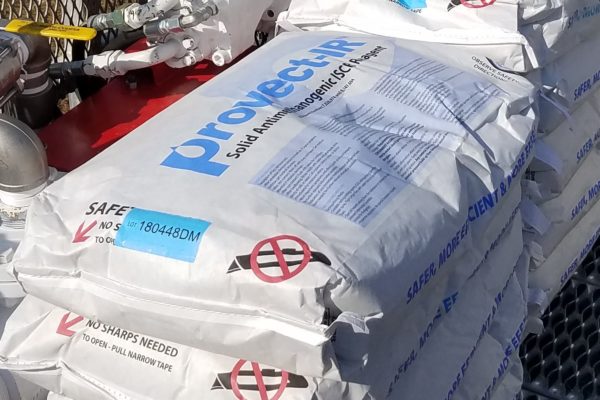Potential Consequences of Excessive Methane Production Following ERD and Conventional ISCR Treatment: Case Studies and Remedial Alternatives
Environmental Show of the South – April 22-24, 2015 – Gatlinburg, Tennessee
By Jim Mueller (Provectus Environmental Products, Inc.), Sidney Aluani, Eduardo Pujol (SGW Services, Brazil), Brent Dayharsh (Mundell and Associates, Inc.), James Henderson (DuPont do Brazil) and Billy Meyer (NC DENR)
At some sites, excessive production of methane has been observed following the addition of organic hydrogen donors such as (emulsified) oils, lecithin, sugars and conventional ISCR reagents. This is because methanogens are commonly the most ubiquitous indigenous microbes in anoxic aquifer settings. And given that methanogens replicate in 1 to 2 hours (whereas Dehalococcoides spp. for example double in 24 to 48 hours), they often bloom and dominate following the addition of organic hydrogen donors, thereby liberating large amounts of methane gas. There are at least three important consequences of this response:
- By utilizing hydrogen, the methanogens compete with dechlorinating microbes thus making inefficient use of the remedial amendment (just 20 ppm methane in groundwater represents about 35% “waste” of material – this is a common and tangible detriment);
- Rapid growth of methanogens consumes alkalinity while generating acids thereby having the potential for aquifer acidification (which may liberate heavy metals causing secondary contaminant issues); and
- Elevated methane concentrations can exceed current and pending regulations of < 10 to <28 ppm in groundwater and/or 0.5% v/v methane in soil gas (e.g., 10% of the LEL) and/or indoor air (methane is flammable between 5% and 15% v/v).
Five case studies will be reviewed where methane production was problematic:
- Subsurface fires next to an industrial facility at a site in the Midwest USA immediately following the application of a conventional, non-antimethanogenic ISCR reagent;
- Generation of up to 23% methane in soil gas immediately adjacent to a public church in North Carolina (with sustained methane production for 8 to 9 months) from an excavated area treated with DARAMEND®, a non-antimethanogenic conventional ISCR reagent;
- Requirement to install an air sparge/SVE contingency system at a site in northern Indiana due to methane accumulation associated with an application of emulsified oil;
- Changes in aquifer flow dynamics and inactivation of an in situ injection system due to methane production and extensive biomass generation following repeat applications of molasses for ERD at a site in Rio De Janeiro, Brazil; and
- Delayed occupancy of a newly developed, high-rise residential complex in Sao Paolo, Brazil due to presence of elevated methane in soil gas following the use of EHC®, a nonantimethanogenic conventional ISCR reagent.
It is clearly important to prevent excessive methanogenesis during a successful remedial action. From a regulatory perspective, public safety issues are paramount; from a property re-use or real estate (Brownfield) developers’ perspective, project delays are costly and can jeopardize an entire program. The use of Provect-IR™ antimethanogenic ISCR reagent uniquely combines multiple sources of nutrient-rich, engineered-release, hydrophilic carbon + ZVI + other reagents along with a source of natural statins as inhibitors of protein biosynthesis and activity of enzyme systems unique to Archaea (i.e., methanogens). Modifications of the reagent can be also be used as a supplement to conventional ERD amendments. Data from laboratory and field studies will be presented to demonstrate rapid contaminant removal coupled with controlled methanogenesis for safer, more efficacious treatment.
Contact:
Jim Mueller – Provectus Environmental Products, Inc., | Email: jim.mueller@provectusenv.com

